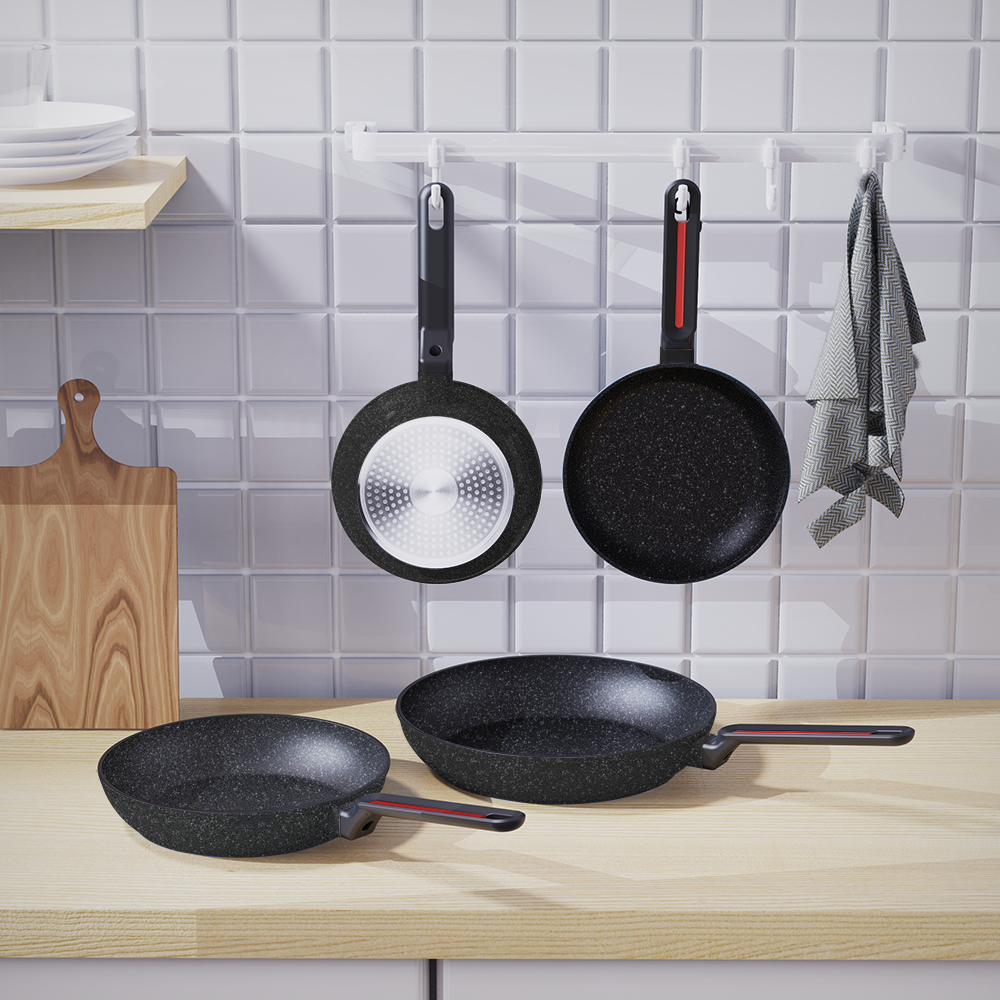How to choose the right kitchenware for you: a guide for beginners to cooking experts

In the kitchen, the right kitchenware can not only improve cooking efficiency, but also make the cooking process more enjoyable. But for many people, facing the dazzling array of kitchenware choices on the market, they often feel overwhelmed. This article will provide you with a systematic method of purchasing kitchenware to help you build a practical and personalized kitchen.
1. Understand your cooking habits and needs
Before buying any kitchenware, you first need to self-assess:
Cooking frequency: How many times a week do you cook? Occasional cooks have completely different needs from those who cook every day
Cooking type: Do you prefer Chinese stir-fry, Western baking, or healthy steaming?
Kitchen space: Small apartments need multifunctional and storable kitchenware, and large kitchens can consider professional equipment
Skill level: Novices should start with basic tools, and professionals may need more professional equipment
Keep a cooking log for a week, write down your most common dishes and the most troublesome cooking links, which will help you clarify your actual needs instead of impulse shopping.
2. Five golden principles for choosing kitchenware
1. Material determines performance and lifespan
Pots:
Stainless steel: durable, does not react to acidic foods, suitable for a variety of cooking methods
Cast iron: good heat preservation, suitable for frying and slow cooking, but requires maintenance
Non-stick coating: suitable for beginners and low-fat cooking, but short lifespan
Copper: best heat conduction, preferred by professional chefs, but expensive and requires maintenance
Knives:
High-carbon stainless steel: sharp and durable, not easy to rust, ideal for home kitchens
Ceramic knives: super sharp and never rust, but fragile and cannot be chopped
2. Ergonomic design affects the user experience
Handle comfort: Is it comfortable to hold? Is it non-slip and heat-insulating?
Weight distribution: overweight pots or knives can cause fatigue
Operational convenience: Is the switch easy to operate? Is it easy to clean?
3. The balance between versatility and specialization
Beginners can give priority to multifunctional kitchen utensils (such as cast iron pans that can fry, stir-fry, stew and bake), but as skills improve, certain professional tools (such as specialized bread knives and woks) can indeed significantly improve results.
4. The trade-off between budget and value
You don’t have to pursue a full set of high-end brands, but core tools (such as chef knives and commonly used pots) are worth investing in quality products. Consider “cost per use” rather than just price.
5. Maintenance and care requirements
Choose according to the maintenance time you can invest:
Cast iron pots need to be oiled regularly
Copper pots need to be polished
Non-stick pots cannot use metal spatulas
III. Core kitchenware purchasing guide
1. Knife selection
Basic three-piece set:
Chef’s knife (about 20cm): handle most cutting work
Fruit knife/peeler: fine cutting
Bread knife: serrated design is suitable for cutting bread and tomatoes
Advanced selection:
Boning knife
Boning knife
Slicing knife
Purchasing tips:
Handle comfort test: actual grip feeling
Balance test: the center of gravity of the knife should be at the front of the handle
Blade test: can easily cut paper, indicating qualified sharpness
2. Pot selection
Basic combination:
Deep cooking pot (3-5 liters): soup, stew
Frying pan (28-30cm): frying
Small milk pot (1-2 liters): hot milk, cook small amounts of food
Material selection reference:
Cooking method Recommended materials
High temperature stir-frying: cast iron, carbon steel
Slow cooking: enameled cast iron, thick bottom stainless steel
Cooking noodles and soup: stainless steel, aluminum
Omelettes and pancakes: non-stick pan
3. Choosing a cutting board
Wooden cutting board: beautiful but knife-friendly, requires maintenance
Plastic cutting board: hygienic and easy to clean, but easy to leave knife marks
Composite materials: combine the advantages of both
It is recommended to prepare two pieces: one for raw food and one for cooked food to avoid cross contamination.
4. Gadget Selection
Practical gadgets worth investing in:
Kitchen scissors (detachable and washable)
Digital thermometer (precisely controls cooking temperature)
Silicone scraper (does not damage pots)
Strainer (different mesh sizes)
Measuring cups and spoons (essential for baking)
Fourth, avoid common purchasing errors
Blind pursuit of sets: sets often contain tools with low usage rates, so it is better to buy common items separately
Be fooled by appearance: beautiful but impractical designs will eventually be idle
Ignore storage: consider storage space at home before purchasing
Overly superstitious about brands: different brands have their own strong products
Ignore after-sales service: check warranty policies and accessories supply
Five, phased kitchenware purchasing suggestions
Beginner stage (just starting to learn cooking)
1 good chef’s knife
1 non-stick frying pan
1 medium soup pot
1 Cutting board
Basic condiment container
Advanced stage (cooking 3-5 times a week)
Additional special knives
Cast iron frying pan
Steamer or steamer basket
Electronic kitchen scale
Hand blender
Experienced stage (daily cooker/enthusiast)
Professional pot set
Whetstone set
Food processor
Vacuum sealer
Special tools (such as noodle maker, grilling equipment, etc.)
VI. Kitchenware maintenance tips
The key to extending the life of kitchenware:
Knives: sharpen regularly and dry immediately after hand washing
Cast iron pots: dry and oil after use
Non-stick pans: avoid high temperature empty cooking and use metal spatulas
Wooden tools: apply cooking oil regularly to prevent cracking
Stainless steel: clean promptly after use to avoid discoloration
Remember, the best kitchenware is not the most expensive, but the one that best suits your cooking style and lifestyle. As your cooking skills improve, your kitchenware collection will naturally grow and evolve. Investing in tools you use every day is investing in a more enjoyable cooking experience and a healthier and more delicious eating life.








